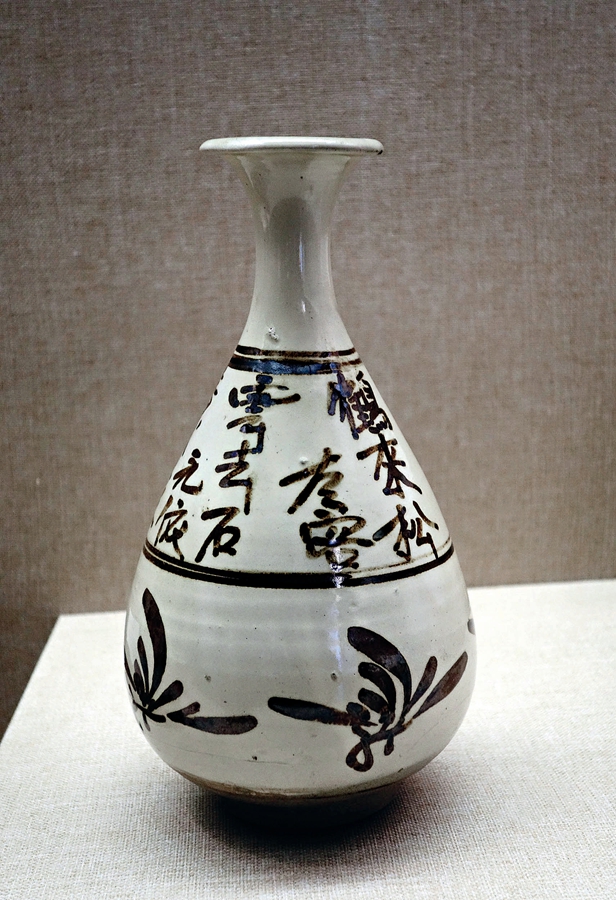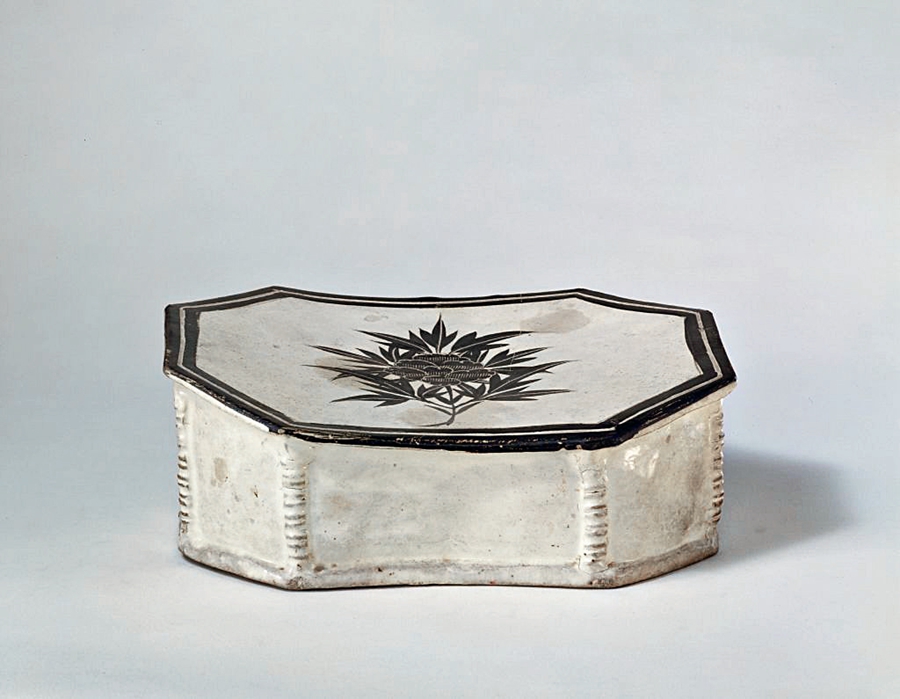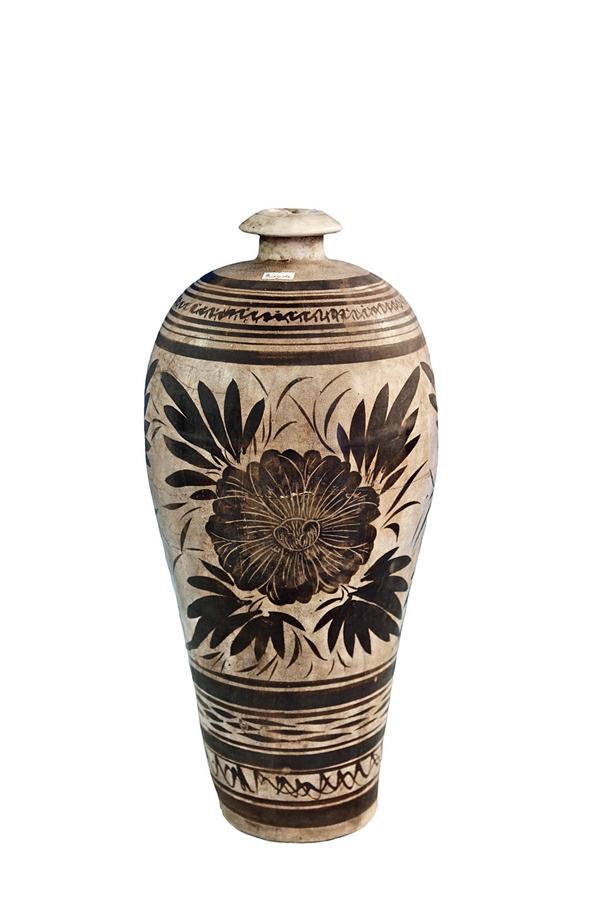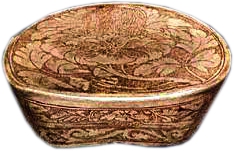THE Song Dynasty (960-1279) indisputably represented a golden age for Chinese ceramics, remembered for a number of famed kilns, both state- and privately-owned. The Cizhou Kiln, the largest in northern China, falls in the latter category.

The operation was located in today’s Cixian County (Cizhou in the Song Dynasty) and Fengfeng District of Handan City, Hebei Province. It was launched in the fifth century, reached its zenith in the 10th to 14th centuries, and has remained in business till today. During uninterrupted production for over a millennium, it has developed a genre of distinctive ethnic and regional features.
The Cizhou Kiln produces a large volume of wares glazed in various hues, including white, black, puce, and green, among which white is the most loved. The majority of the pieces are for daily use, including table wares, vases, washing basins, jars, brush washers, and pillows. Its ceramic pillows come in a dazzling variety of shapes and designs.

Octagonal Cizhou Pillow (Palace Museum in Beijing)
The white ceramic pillow is framed in black, with the bulging vertical edges in bamboo shape. The top is painted with a black peony whose pedals and leaves are engraved to show the veins. Its design is atypical of the Cizhou Kiln of the Song Dynasty, and is believed to be of a high-end product line.
The Cizhou Kiln stood out for its decorative techniques that outdid those of the top five kilns of the Song Dynasty – Ru, Guan, Jun, Ge, and Ding, and therefore has an important position in the Chinese and international ceramic development. These techniques of over three dozen drew on Chinese ink painting and calligraphy, and created engraved or painted motifs in black or sepia on a white surface. The most valued, and also rarest, is those of black patterns on white background.

Cizhou Plum Vase of Flowery Design (Fujian Folk Museum)
This item has a short neck, sliding shoulders and a slender body fully covered in black patterns on a white surface. The motifs shift from waves at the shoulders to peony on the belly and again waves on the lower part of the body, with string pattern (parallel lines) in between.
The black pigment used on the Cizhou ware is made of piebald stone, which can be found locally. After it is applied on a white glaze, the potters would cover the whole item with a layer of finely ground clay for protection and “makeup” of the glaze. This cosmetic clay, as it is commonly known, makes the surface whiter and brighter. This relatively mature underglazed technique laid the ground for the creation of blue-and-white and polychrome porcelain of later times.
Besides flowery patterns, Cizhou ware is also adorned with poems, mostly by scholars of the period. They are valuable materials for study of that era of history. Without restrictions for the design of its state-run peers, the Cizhou Kiln felt free to borrow profusely from nature for decorative patterns, which included landscape, clouds, mythological and real-life animals – dragons, phoenixes, tigers, horses, and deer among others – and birds. They give its products an appealing, folksy touch that appealed to the commoners.

Cizhou White-Glazed Pillow with Incised Floral Sprays of
Peony (Shaanxi History Museum)
The oval-shaped pillow is fully covered in ivory-hued glaze. The top is incised with floral sprays of peony and densely studded with “pearls” in the rest of the space, both fluidly outlined. The back side is pierced.
Widely loved by the populace, the Cizhou ware saw soaring demand, which prompted other kilns in northern China to imitate it. Gradually, a sprawling production network of private operations – the largest in ancient China – came into being, radiating from Guantai Town of Handan City to Henan, Shandong, Jiangxi, Fujian, and Sichuan provinces. They produced ceramic items similar to the Cizhou ware in large volumes.
Although overshadowed by the top five official kilns of the Song Dynasty, the Cizhou Kiln has gained a firm foothold in the market and in the ceramic history of China for its freehand style. The paintings and calligraphies on its products are of a free and easy aesthetic that betrays their artistic sophistication. They are also a good reference for study of the customs and folk art of the Song and later dynasties. With its great vitality and popularity, the Cizhou Kiln is now one of the largest ceramic brands in China, and exports to countries around the world.
SONG XIAOYAN is a course planner of antique chinaware at the Ancient Porcelain Courtyard Museum.